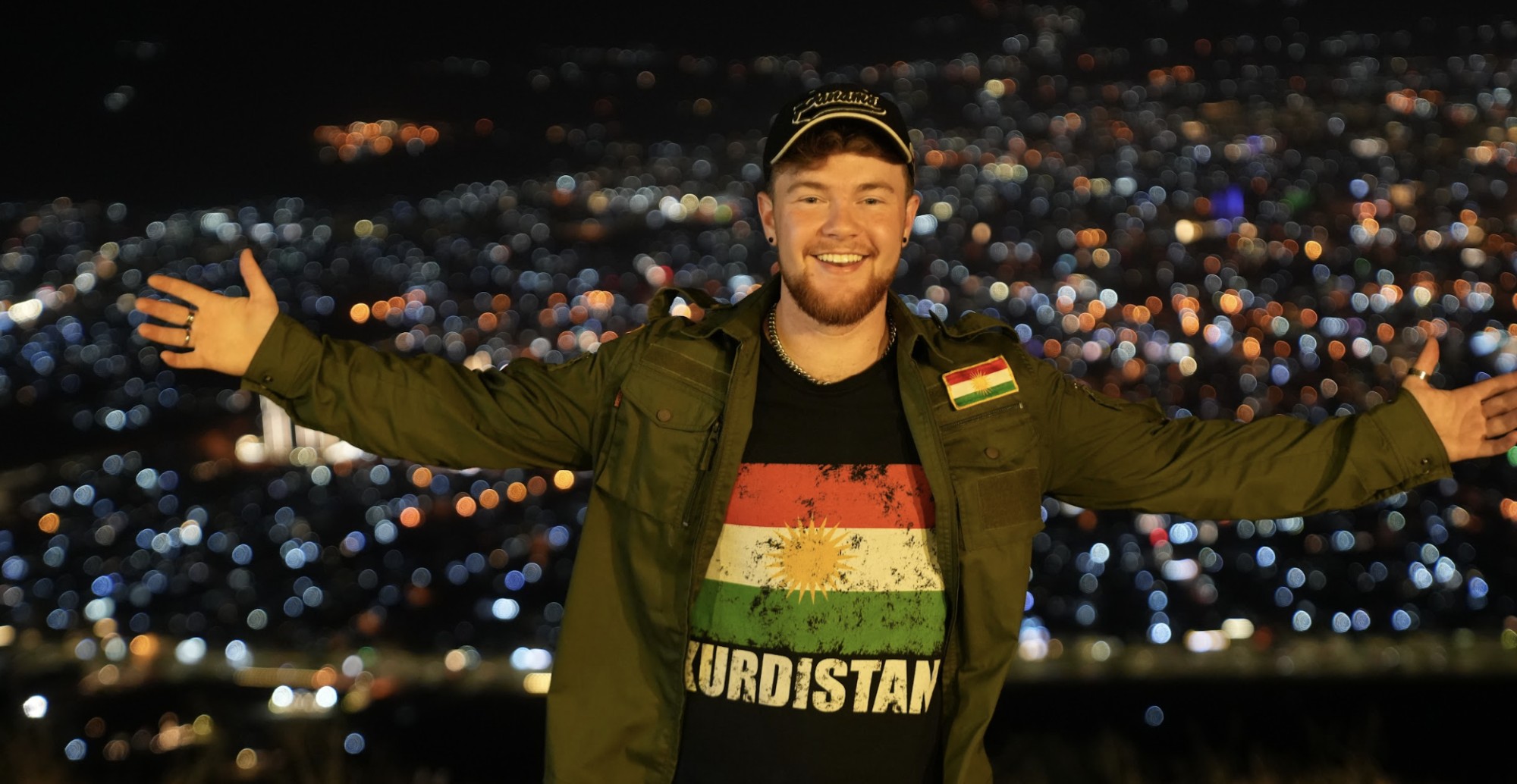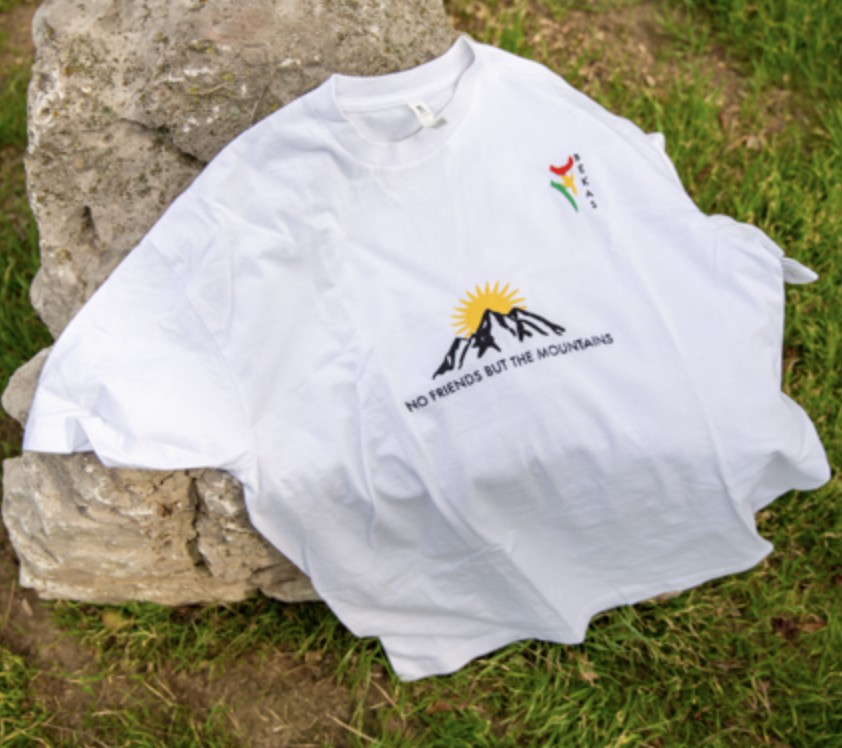In the heart of the Kurdistan Region of Iraq (KRI), where the winds whisper stories of a vibrant past, there lies an extraordinary monument to religious coexistence that transcends borders, cultures, and faiths. This remarkable narrative unfolds at the foot of Mount Safin in a valley overlooking the Shaqlawa district. Here, Muslims and Christians come together to worship at a sacred shrine, known as Sheikh Wso Rahman to the former and Raban Boya to the latter.

A history of religious coexistence is a point of pride for the people of the KRI, but the story of Raban Boya offers a rare glimpse into a harmony that is unmatched elsewhere in the world. In a cave hewn at an elevation of 1,070 meters in the mountains, this shrine serves as a sanctuary for the two religious communities. It was officially recognized as a historical site in 1945, and a road leading to the shrine was constructed by the Kurdistan Regional Government (KRG) in 2005. Today, this hallowed place sees Christians and Muslims alike gather for prayer and pilgrimage, with a surge in Christian visitors occurring two weeks after Easter.
Centuries of shared experiences
Sbi Matthew Khorani, the president of the Shaqlawa Christian Youth Development Organization, sheds light on the rich history of Christianity in the district. With around 170 Christian families residing in the area – most of them Chaldeans – the roots of Christianity here date back several centuries before the advent of Islam. Raban Boya, located at the foot of Mount Safin, has been a sacred site since the early Christian era. A testament to this enduring history is the presence of an ancient church and cemetery in close proximity to the shrine, underscoring the shared history of Shaqlawa’s diverse inhabitants.
Sbi Matthew elaborates on Raban Boya’s significance: “In our country, they call him Raben Biya, but his name is known as Raban Boya among the people. Mar Qardag, the chief of Deir in the book Shahda al-Sharq, called him Raban Beri. He was a Christian who lived and worshipped there, eventually dying and being buried within the cave. According to local beliefs, those seeking miracles, especially women seeking the blessing of children, come to this stone within the cave, believing that God would grant their requests.”
One of the most awe-inspiring aspects of this coexistence is the annual visitation by Christians from all over Iraq, and in recent years, even from other countries. They gather to worship and connect with their faith, side by side with their Muslim friends, who refer to the shrine as Sheikh Wso Rahman. The mutual respect, the shared sacred space, and the ability to pray together make this coexistence in Shaqlawa a unique and beautiful example for the world to behold.
Mullah Sami Mohammed, the preacher of the mosque in the Betrama neighborhood of Shaqlawa, emphasizes the profound respect and acceptance that underpin this coexistence. In Islam, living harmoniously with Christians is not just normal but deeply cherished. Residents of Shaqlawa seamlessly blend their lives, transcending religious boundaries, and living in such harmony that one’s religion often remains unknown to neighbors. This is a testament to the strength of the bonds forged through centuries of shared experiences.
“Muslims visit this shrine, especially those who seek miracles, like those who desire children,” Mullah Sami explained. “Historical sources reveal that a Muslim named Sheikh Wso Abdul Rahman lived and worshipped there for many years. This valley and shrine have become a holy place for Muslims as well.”

Shaped by tolerance
The beauty of this coexistence in Shaqlawa is not limited to shared worship; it extends to the realm of the departed. Muslims and Christians share a common cemetery, underscoring the deep bonds that have united them for generations.
Shaqlawa, a district that belongs to Erbil province and is in the northeastern part of Erbil, is home to a population of 26,261 people. This multicultural community, which once also included Jews, maintains a tradition of peaceful coexistence and acceptance that spans generations.
Mullah Sami shares a poignant tradition that epitomizes this profound coexistence – the recitation of the Quran during Christian funerals. In the face of grief, the religious boundaries blur, and a beautiful unity is forged. He says, “There is no fixed time for Muslims to visit the shrine. They can visit it whenever they want. We have often gone there together with the priest, and each of us has prayed in our own religion.”
In the eyes of Mullah Sami, this harmonious coexistence aligns with the beautiful message of the Prophet Mohammed, which calls for the protection and respect of the People of the Book, reinforcing the need for understanding and acceptance. “I pray that this coexistence continues to thrive, becoming even more beautiful,” he adds. “I am thankful to the KRG and its President Nechirvan Barzani for their attention to this sacred coexistence, and I hope that Shaqlawa can be recognized as a symbol of unity in the region.”
Mayor of Shaqlawa Karwan Karim Khan emphasized the history of tolerance that has shaped the very essence of the city. Shaqlawa has a rich and diverse history, where individuals from various backgrounds have grown up side by side, often without even knowing the faith of their playmates. This culture of coexistence has become deeply ingrained in the minds of the Kurdish people and forms the foundation of political culture in the KRI.

This culture of tolerance finds its historical roots in the late 19th century, a time when visionary thinkers like Sheikh Abdulsalam Barzani and Mar Shamoun emerged. Sheikh Abdulsalam Barzani (1887 - 1914), a prominent leader of one of the initial Kurdish uprisings against the Ottomans in present-day Iraqi Kurdistan, shared a deep friendship with Mar Shamoun, the leader of Kurdistan's Christian community. Mar Shamoun was affectionately known as "Sheikh al-Nasara" by the Christian population. These concepts find resonance in the sentiments of mystics and poets such as Safi Hirani, who professed unwavering allegiance to the church through his poetic expressions.
Even in the face of mortality, the threads of harmony and unity persistently endure. In 1987, a tragic incident orchestrated by the Baathist regime claimed the lives of 23 individuals in Shaqlawa, where Christians and Muslim Kurds perished together. Remarkably, Christian remains were interred in Muslim cemeteries, in observance of Islamic traditions, reaffirming the bonds of coexistence even in death
Unity in diversity
This rich tapestry of coexistence forms an integral part of the Kurdish identity, with a deep-seated commitment to peaceful and civilized living. The Kurds, having experienced discrimination and forced assimilation, now seek independence and autonomy. Christians, too, have shown unwavering support for the Kurdish independence movement, signing covenants of brotherhood and freedom with their Kurdish brethren.
The cultural heritage of coexistence is a precious asset that both communities in Shaqlawa seek to protect and preserve. The local government aims to create an environment where Kurds and Chaldeans can together reap the benefits of this unique harmony, thereby contributing to the economic well-being of the city.
In a world often marred by religious strife, the story of Raban Boya in Shaqlawa stands as a beacon of hope, a symbol of unity that transcends boundaries and faiths.
With shared cemeteries, a history of common rituals in times of sorrow, and the deep-rooted bonds of brotherhood and unity, Shaqlawa embodies a beautiful example of interfaith harmony. As we listen to the stories whispered by the winds in this serene valley, we can only hope that the beautiful coexistence in Shaqlawa continues to flourish, a true example of unity in diversity. And, as Mullah Sami Mohammed aptly wished, may Shaqlawa serve as the capital of coexistence in the KRI and a shining beacon for the world to follow.
Mohammad Dargalayi is a journalist and photographer with 13 years of experience. He is a member of IFJ Global.

